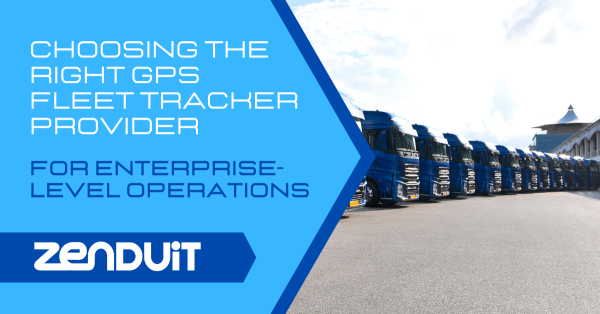
Fleet insurance is essential for any commercial vehicle on the road. With so many risks and unknowns, it’s critical to make sure that your assets and drivers are protected.
Despite its importance, fleet insurance can be expensive, so much so that some businesses feel they must forego coverage altogether, putting themselves and their employees at risk.
In this article, we’ll offer seven tips to reduce your fleet insurance costs using a combination of technology, good business practices and common sense.
1. Leverage Your Data
One of the most effective steps you can take to lower the costs of fleet insurance is leveraging your data. When it comes to the world of insurance, numbers speak louder than words, and the more conclusively you can prove your vehicles are low risk, the more likely you are to get a good rate.
Telematics can help you assess and gain insight into your fleet’s overall driving history and vehicle health. Telematics data can provide visibility into driver behaviour, such as speeding, tailgating or harsh braking, and identify any accidents that your vehicle may have been involved in.
Furthermore, telematics data can track your drivers’ hours of service to make sure they’re not being overworked.
With the right information, you’ll be able to give your insurance provider a holistic risk assessment specific to your business and operations.
2. Enforce Good Driving Standards
One of the main determinants of your fleet’s insurance premiums is the the way your drivers operate their vehicles. If you want to make a strong case for lower rates, you need to ensure that your team is adhering to best practices when on the road.
Conducting regular driver’s licence checks will help you identify any employees that have been convicted of a driving offence, or have a work history peppered with bad habits
If you can show that you are making an effort to mitigate risks associated with your fleet, you’re more likely to get a lower insurance premium.
3. Keep Tabs on Your Drivers on the Road
There are a number of ways to track how your drivers behave on the road, which in turn can offer valuable insight – and discounts – on your premiums.
Some businesses install devices in their vehicles that provide telematics data around distance, triggered alerts, and dashcam footage.
Insurance telematics, also referred to as usage-based insurance (UBI) telematics,can customize your premiums based on your fleet’s driving patterns, monitoring behaviour on the road in real-time and offering a holistic and objective picture of your fleet.
Such data has created a massive shift in determining an organization’s premiums and how insurance is assigned to your fleet.
4. Enrich Your Drivers’ Skills
While monitoring your drivers’ performance on the road can be helpful, it’s important to also recognize the value of actively enhancing it.
One of the best ways to do this is by investing in driver training. This can help your team to brush up on their skills and become safer, more confident drivers.
Additional, consistent training also sends a strong message to insurance providers that you’re serious about reducing risks. As a result, you’re more likely to see your rates go down.
5. Maintain Your Vehicles
Enforcing scheduled vehicle maintenance can lessen unexpected breakdowns and even prevent accidents.
By staying on top of regular tire rotations, oil changes and inspections, you’ll keep your fleet healthy and avoid excessive wear and tear.
When you lessen the chance of accidents, your insurance premiums will go down.
6. Review Your Coverage Annually
Your business is unique, and as it changes and grows, so too will your insurance needs. You should review your fleet insurance coverage at least once per year to make sure that your fleet’s coverage is still adequate.
By keeping your coverage up-to-date and performing regular assessments with your insurance provider, you’ll be able to paint a picture of a safe fleet with a low accident rate, and that will save you money in the long run.
Partner with your provider to work through claims history, where you can improve and what to do in the event of an accident.
Before you review your fleet insurance, gather all relevant data that supports your fleet safety management plans and show your provider how you are ensuring the safety of your fleet and your drivers.
Of course, fleet management software and telematics data are great tools to help you achieve this efficiently.
7. Choose the Right Fleet Insurance Provider
Of course, one of the most impactful things you can do to get a lower fleet insurance rate is to choose the right provider. Be sure to shop around and compare rates. It’s also important to read the fine print and make sure that you’re getting the coverage you need.
It’s important to find an insurer that you can trust and that will work with you to get the best possible rate for your business.
On average, fleets lose over $60 billion each year due to collisions. Insurance can be tricky but is absolutely essential for businesses that rely on vehicles. By following these tips, you can reduce your premiums and find a provider that works for you.

